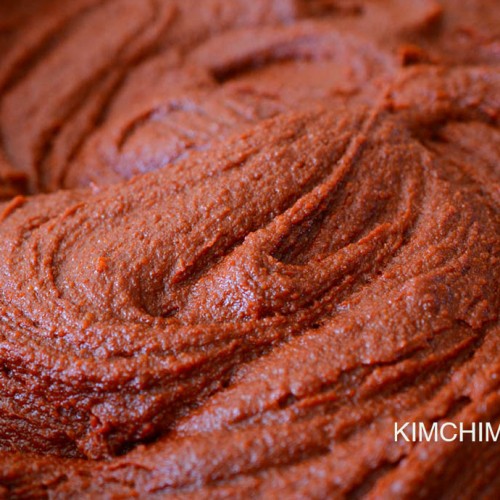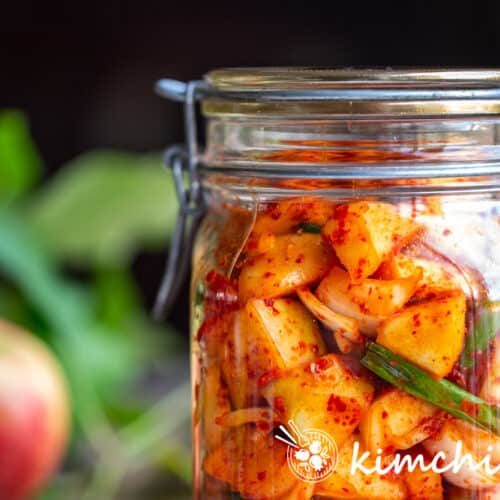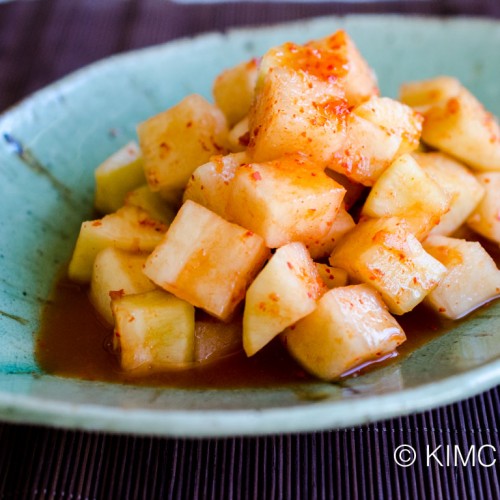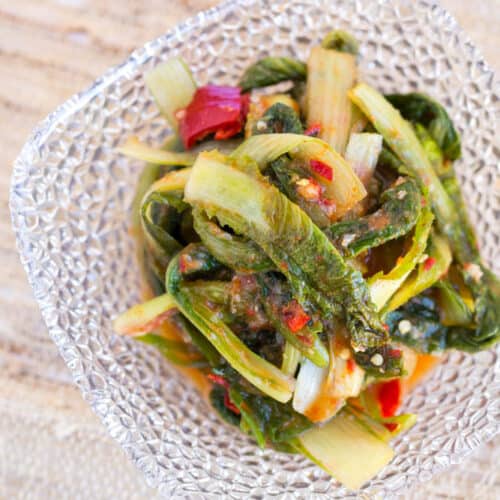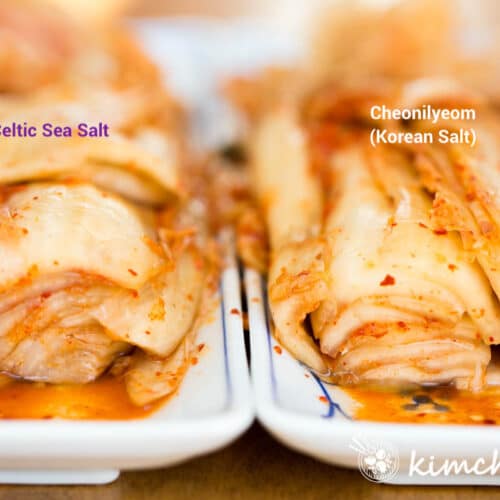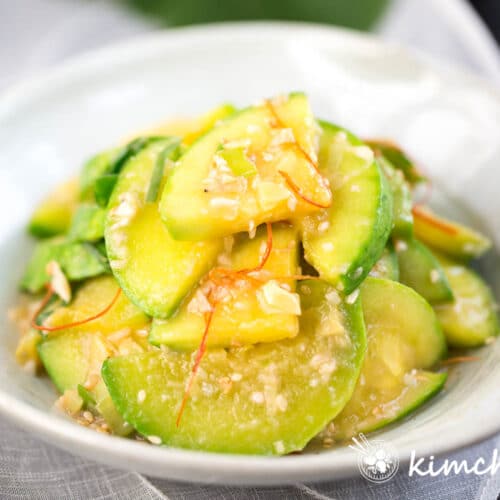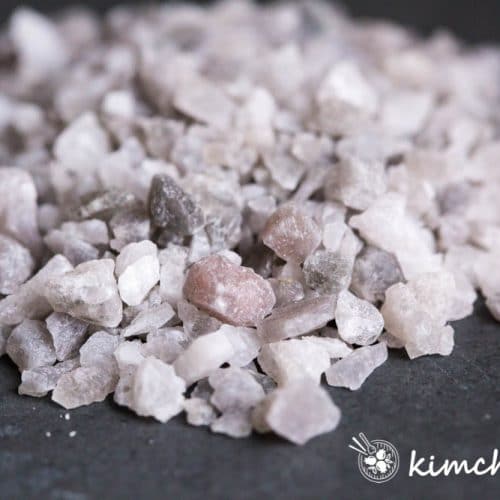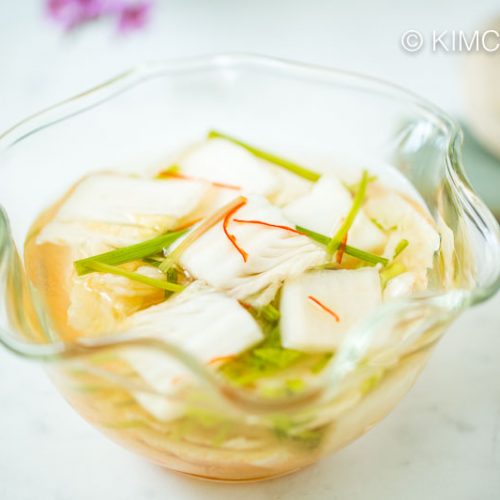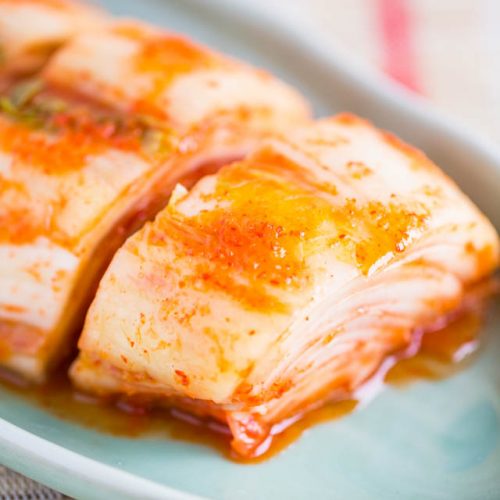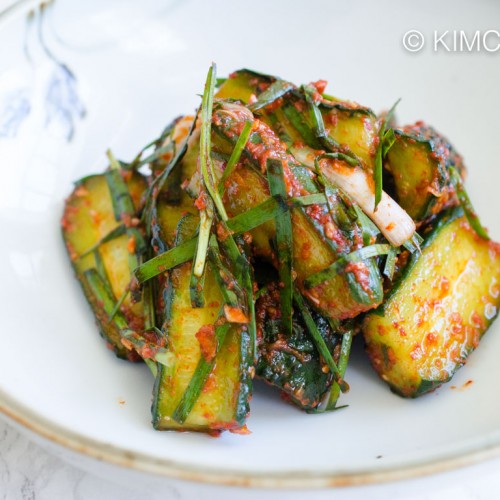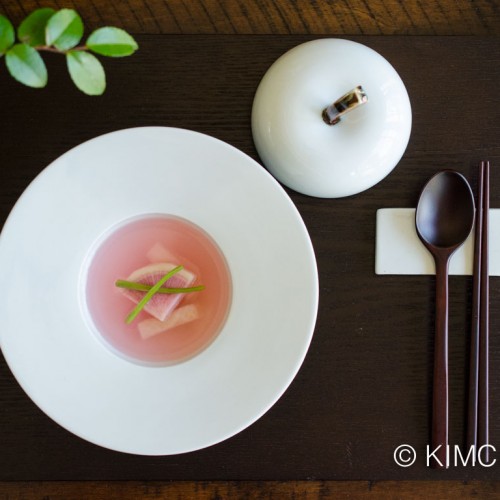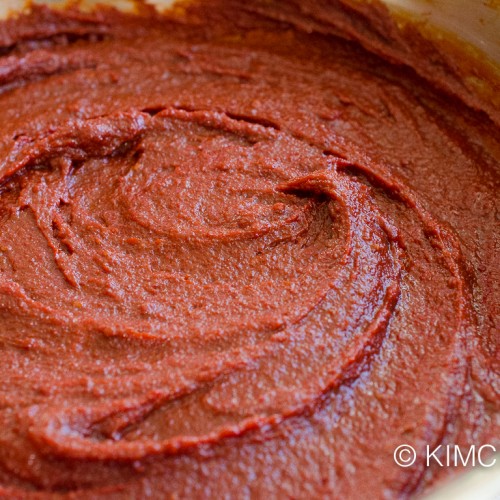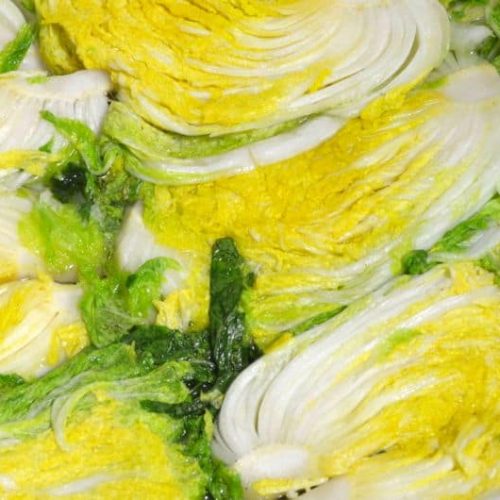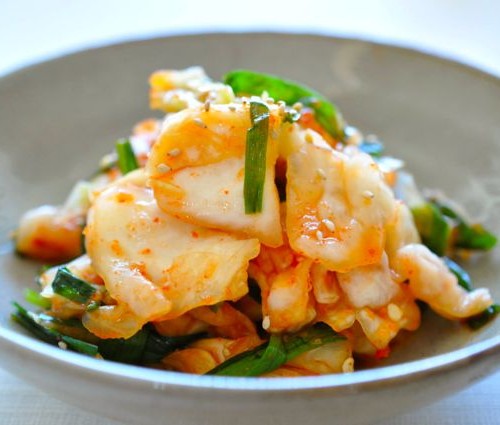What is Korean Coarse Sea Salt (Gul-geun Sogeum) ?

Korean Coarse Sea Salt (Gul-geun Sogeum 굵은소금) is different from many other sea salts due to the way the salt is dried. Korean sea salt is still made the old-fashioned way of drying in salt flats in sun. So, these salts have a more earthy and slightly bitter taste than other salts while having lower sodium than most. There are many other Korean salts so be sure to READ more about the different salts on my Korean Salt Guide post.
Although Gul-Geun Sogeum just means 'coarse salt' - when Koreans say 'coarse salt', it is implied that one is talking about coarse sea salt. Whereas, Goeun Sogeum 고운소금 which means 'fine salt' doesn't always imply fine sea salt.
Coarse Sea Salt is used for brining kimchi vegetables, for pickling, or when making fermented bean sauces or salting fishes in Korean cooking.
The kind of salt has a large effect on the outcome of these dishes so it is best to use Korean coarse sea salt (Cheonilyeom 천일염) when making these. You can read more about what is the best salt for Kimchi in my Best Salt and Kimchi post.
Not To Be Confused With
꽃소금 Kkotsogeum, 고운소금 Goeun Sogeum (fine salt which many not be sea salt), 맛소금 mat-sogeum (salt with msg added), 구운소금 Gooeun Sogeum (roasted salt)
Where and What To Buy
You can buy different brands at Korean grocery stores or online on my Amazon store.
There are different brands that are similarly good. I like The Salt 더솔트 brand but that's not always available online. Look for others that say -
천일염, 굵은 바다소금
How to Use/Cook
Korean coarse sea salt that's sun-dried is a must for Kimchi making, Gochujang and other fermenting recipes but can be also used for all recipes. Note, I don't use it in my non-Kimchi recipes though because I try to make it easy for people to make without this particular salt. I use regular fine sea salt like Trader Joe's which are saltier than this coarse sea salt.
If you are going to use this sea salt for cooking my recipes, I recommend that you add more to taste.
How to Clean/Store
You can store this salt in the package in the pantry for a long time but I like to store them in a breathable onggi (jar) so more bittern 간수 is removed over time. You can read my Salt and Kimch post to understand why this is important.
Nutrition/Health Info
- Korean coarse sea salt that's sundried (aka Cheonilyeom or Solar Sea Salt) has trace of various minerals and has lower sodium level than many other salts.

